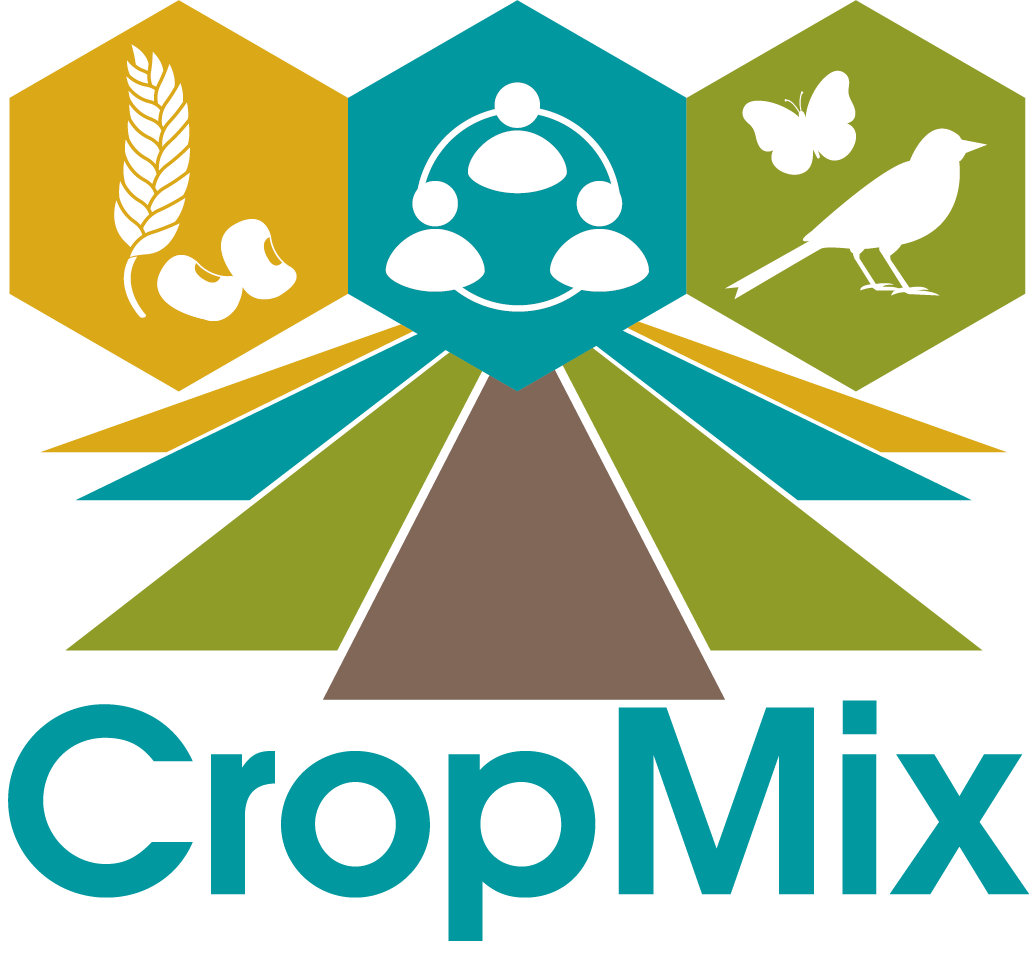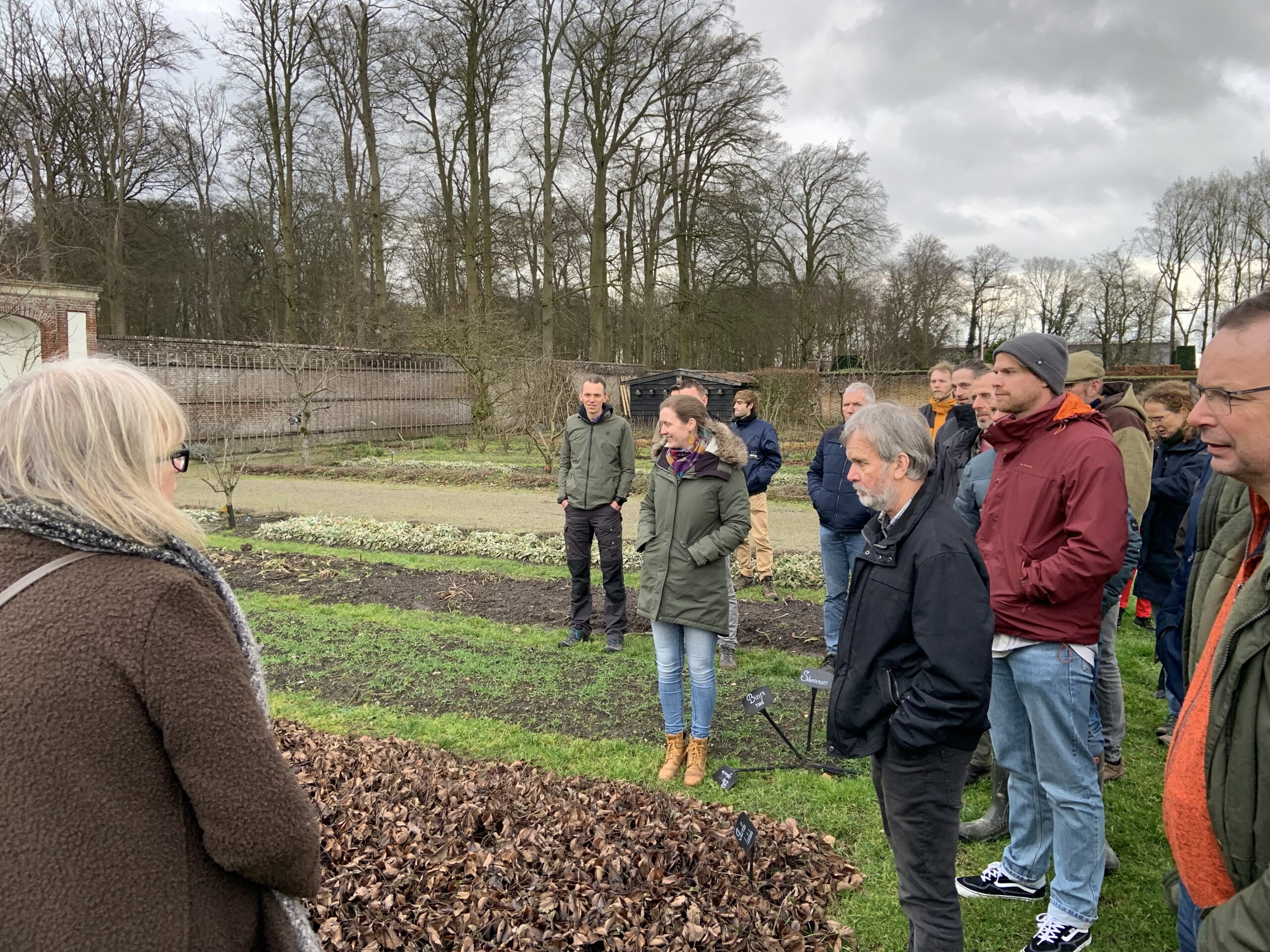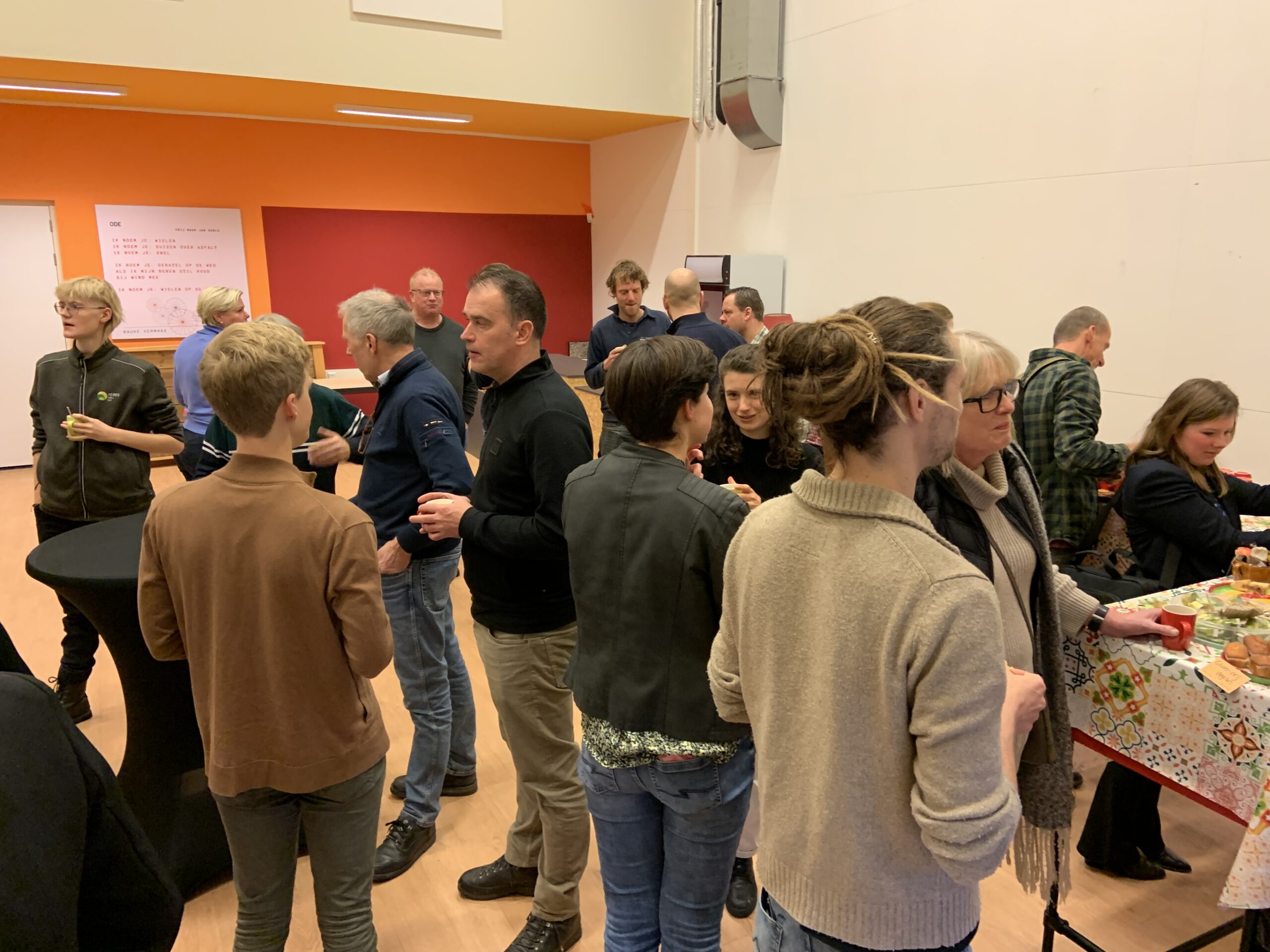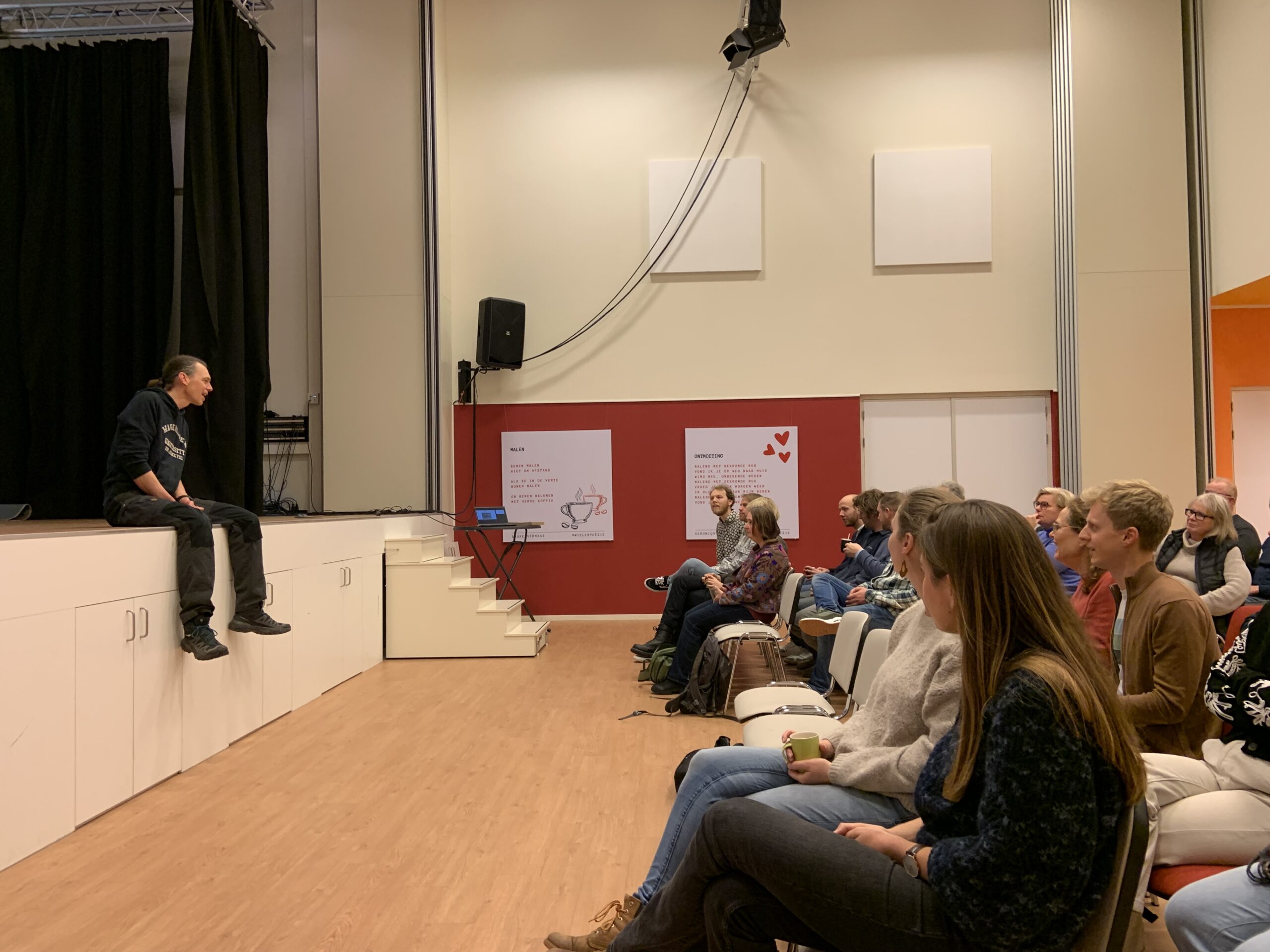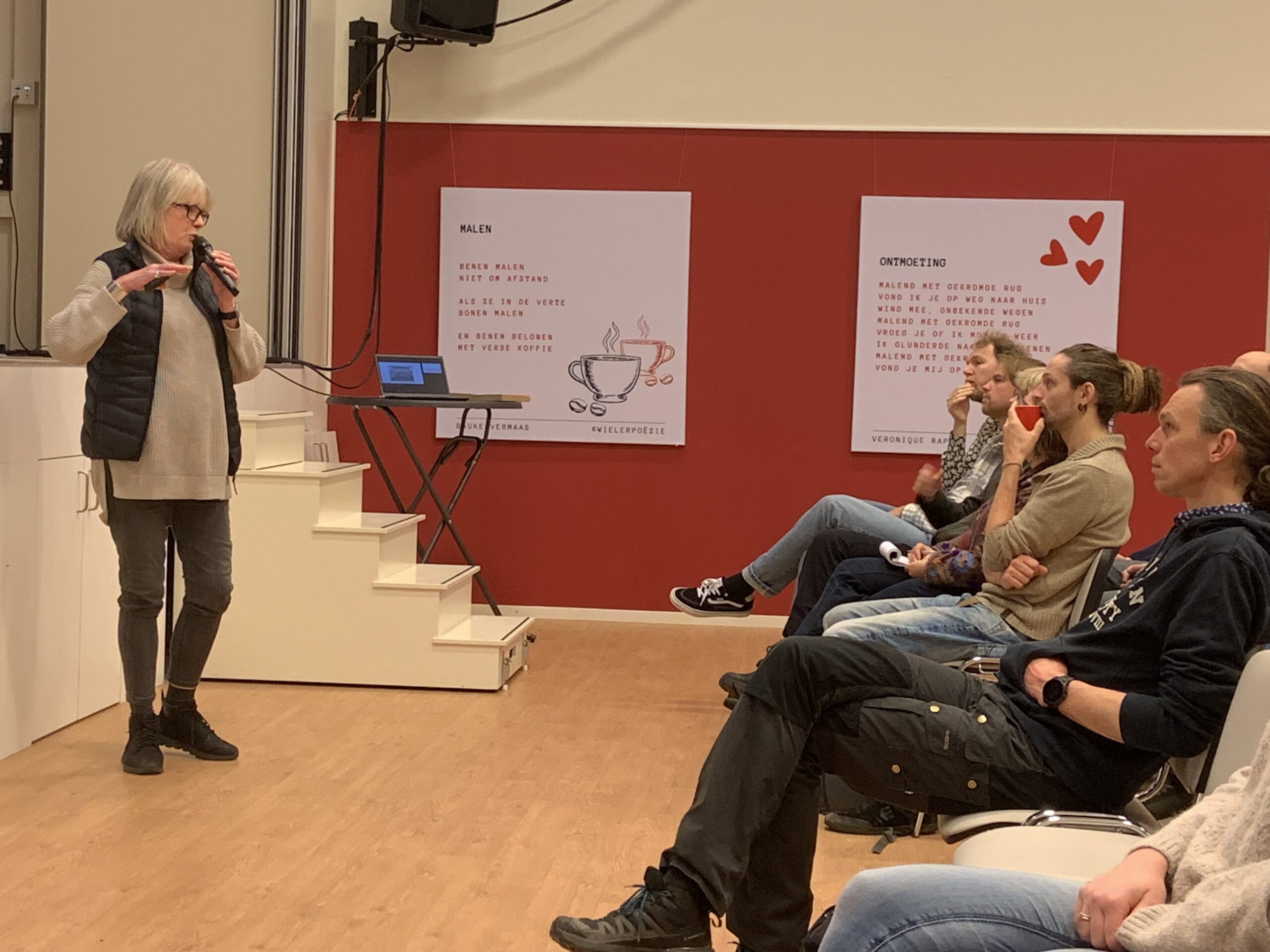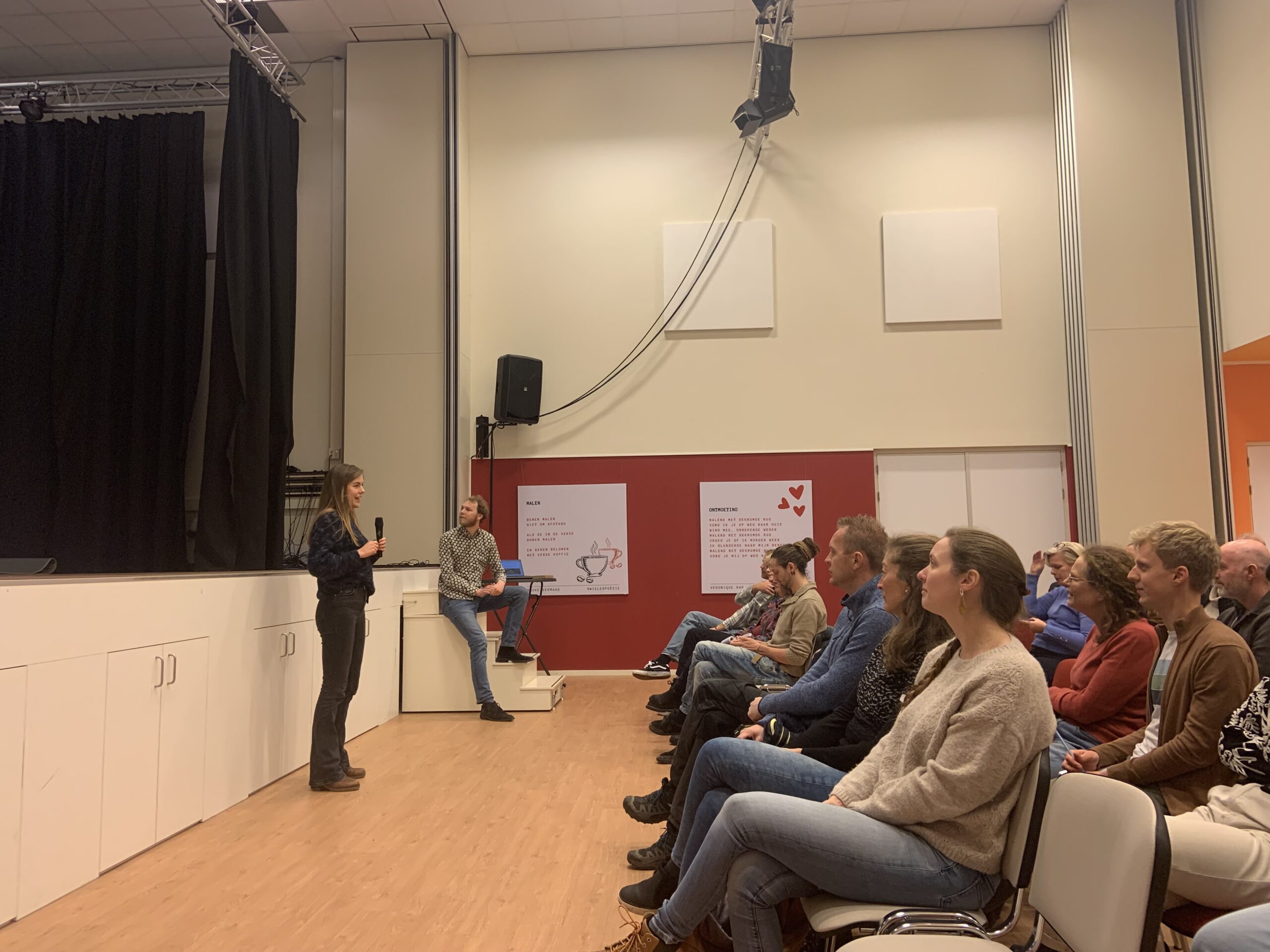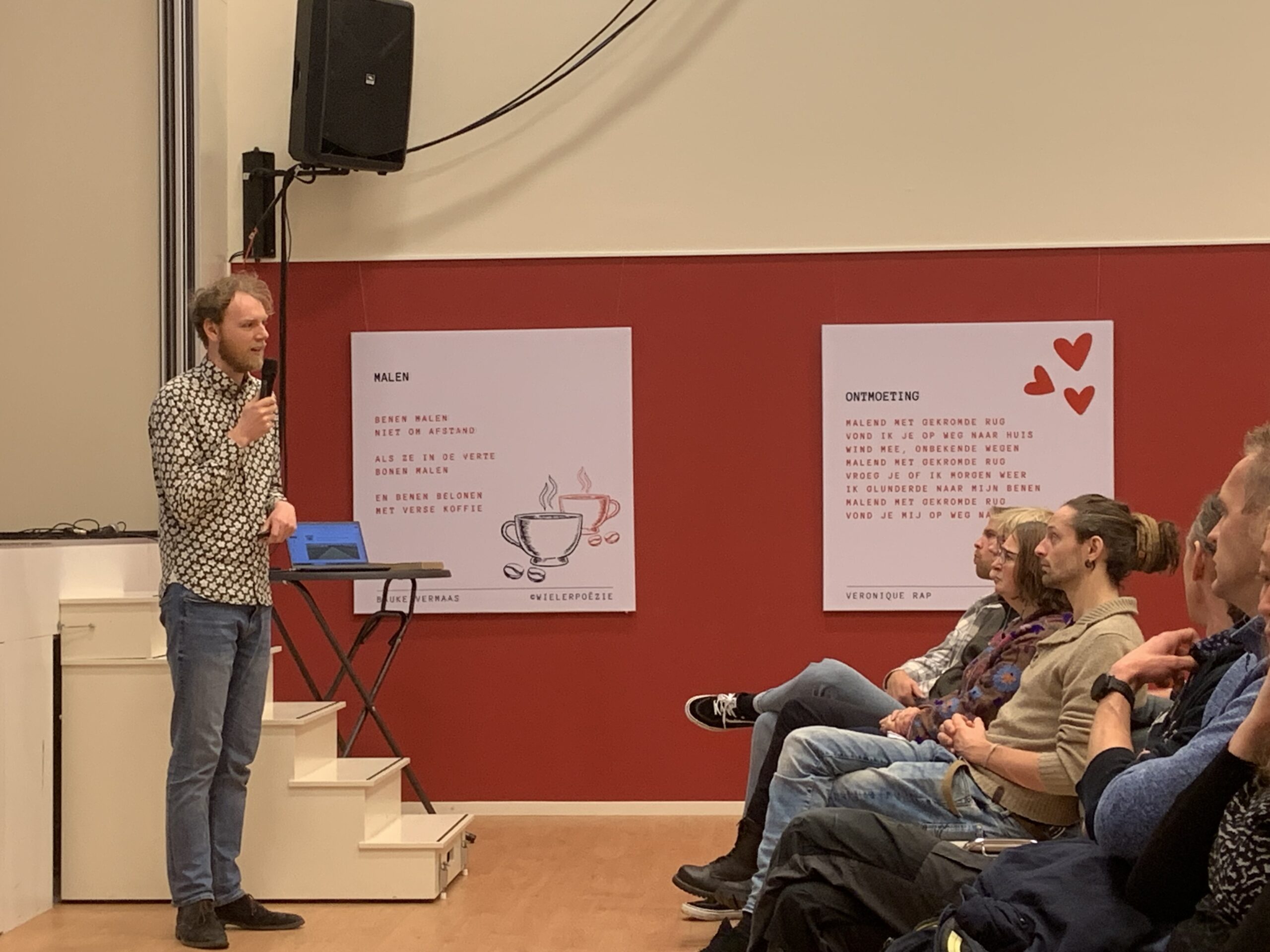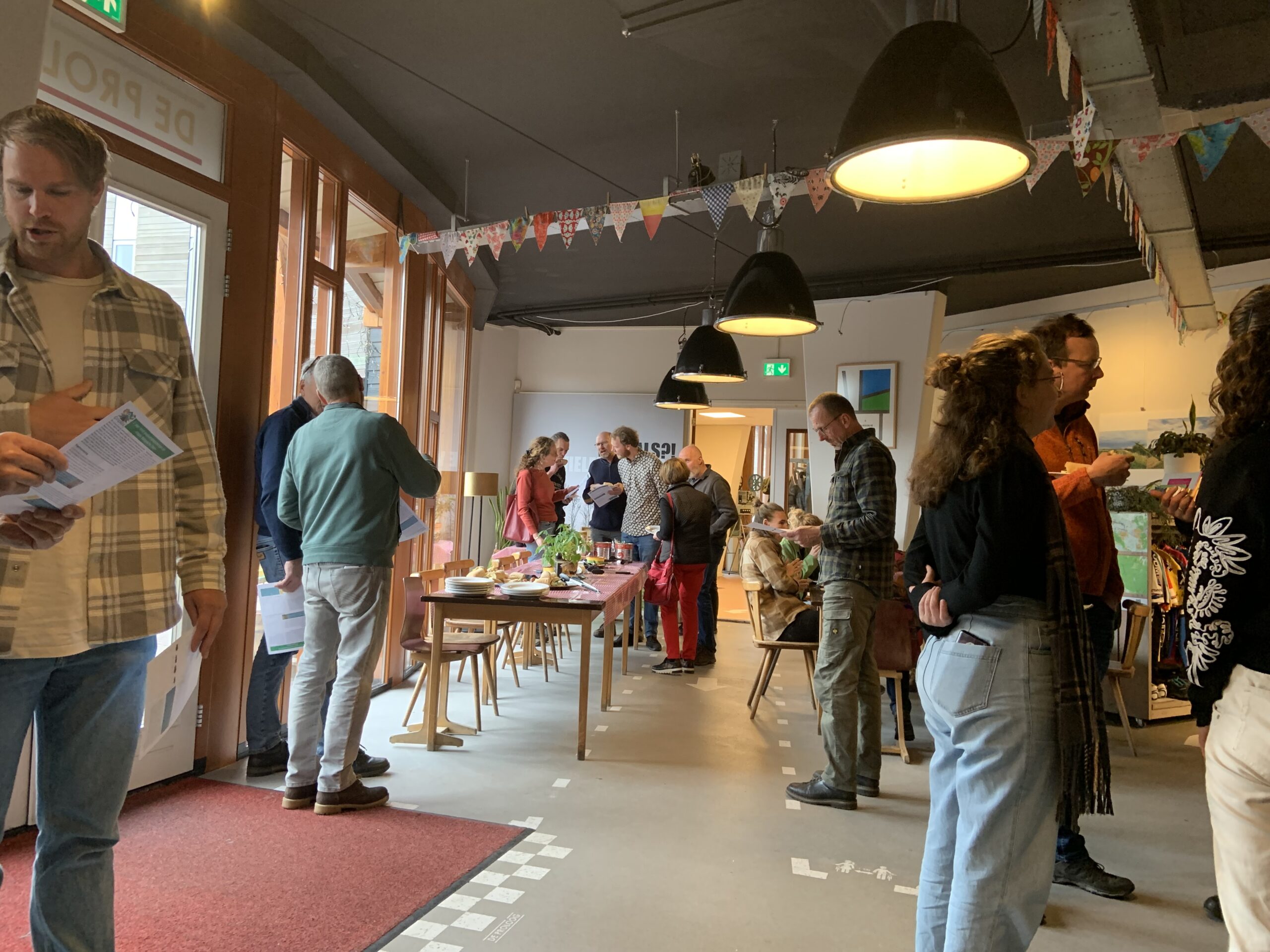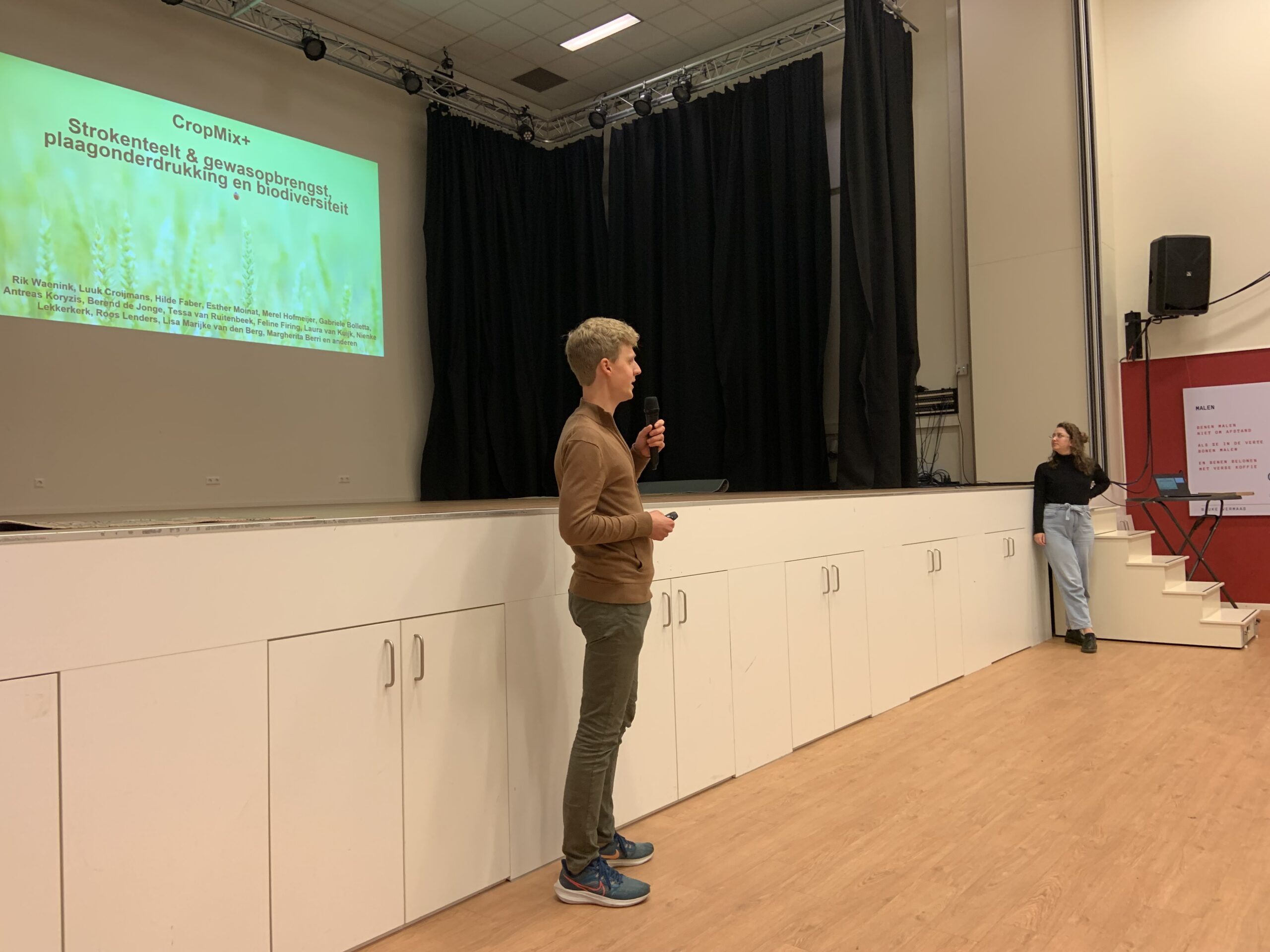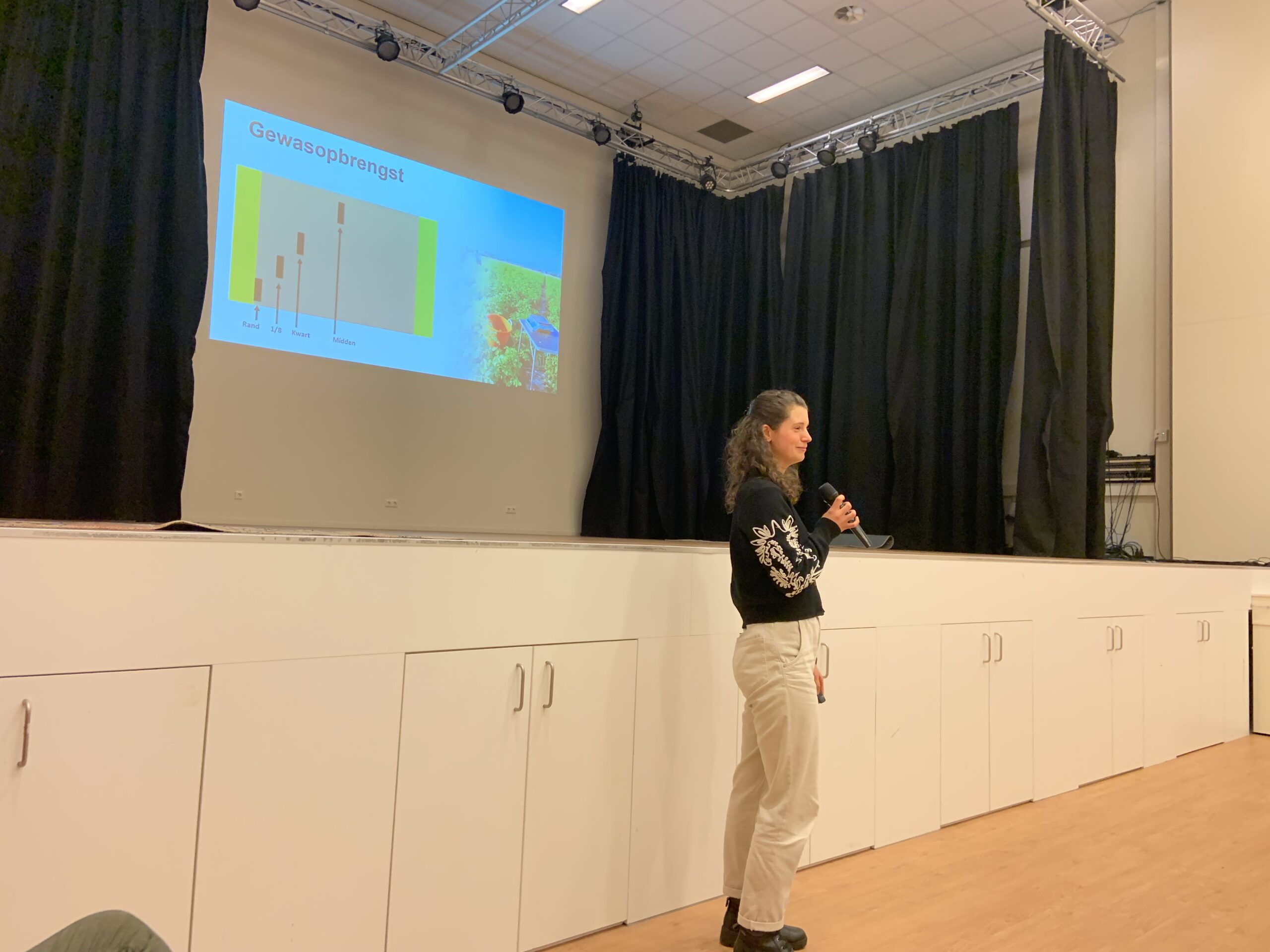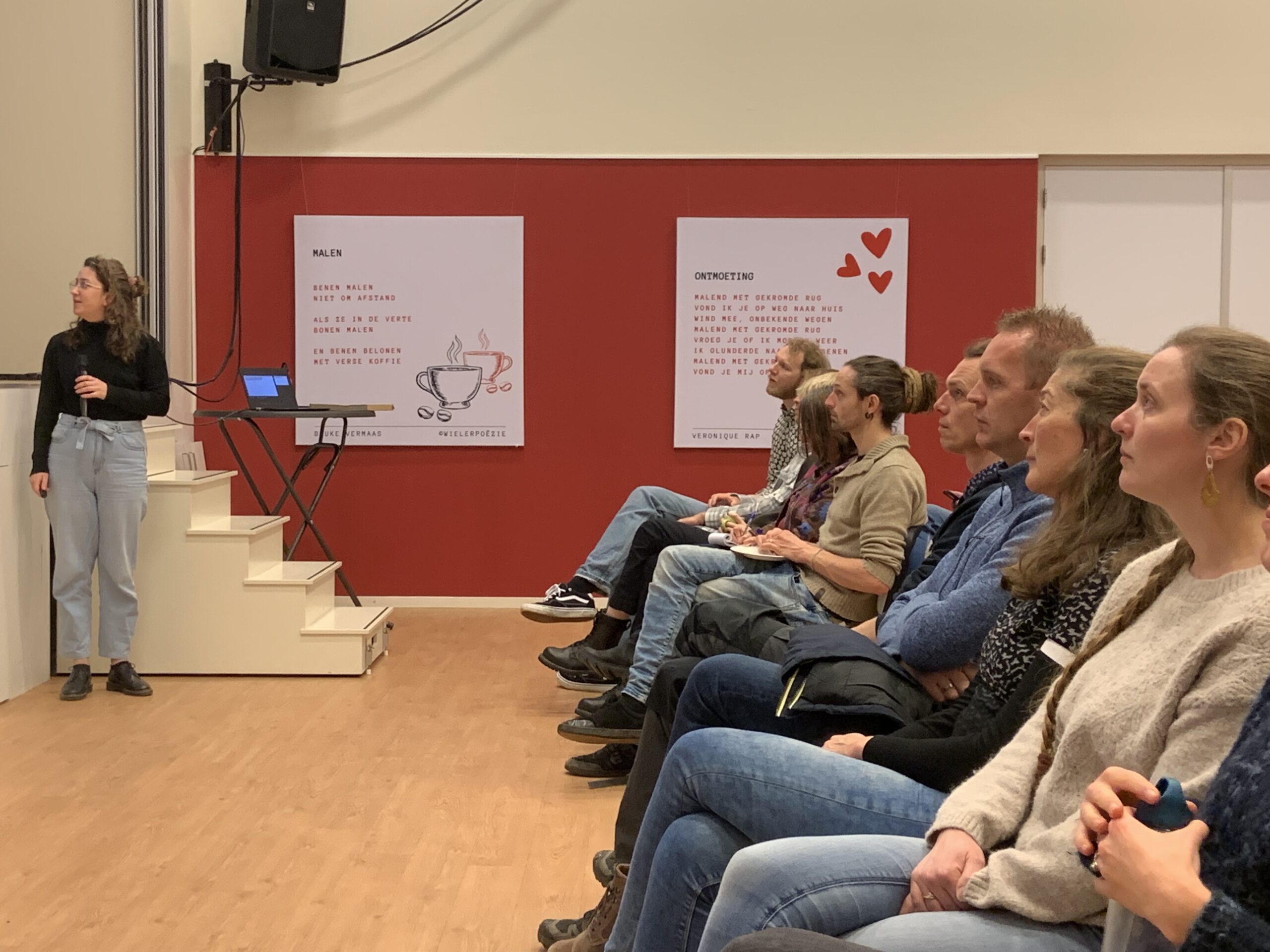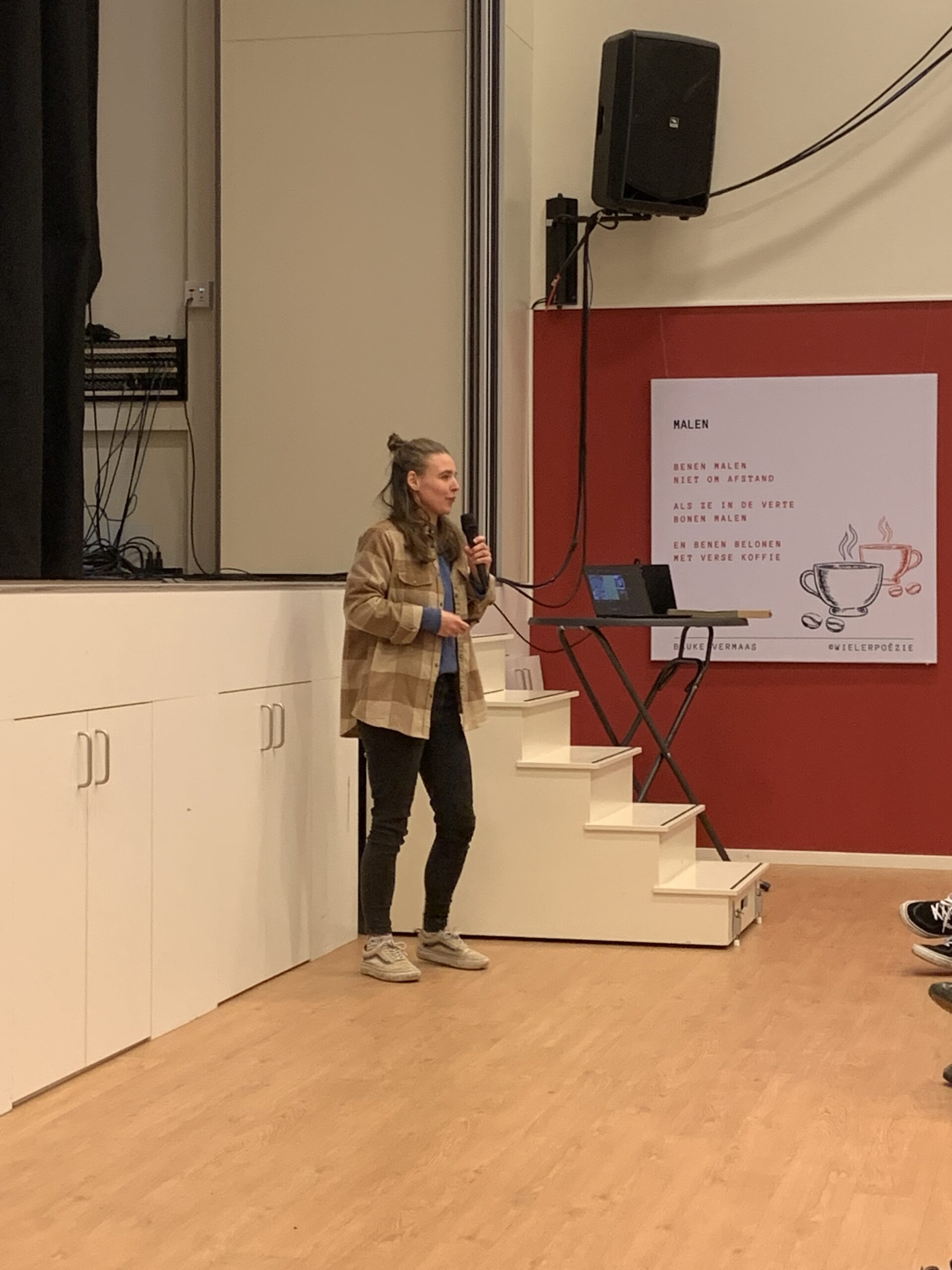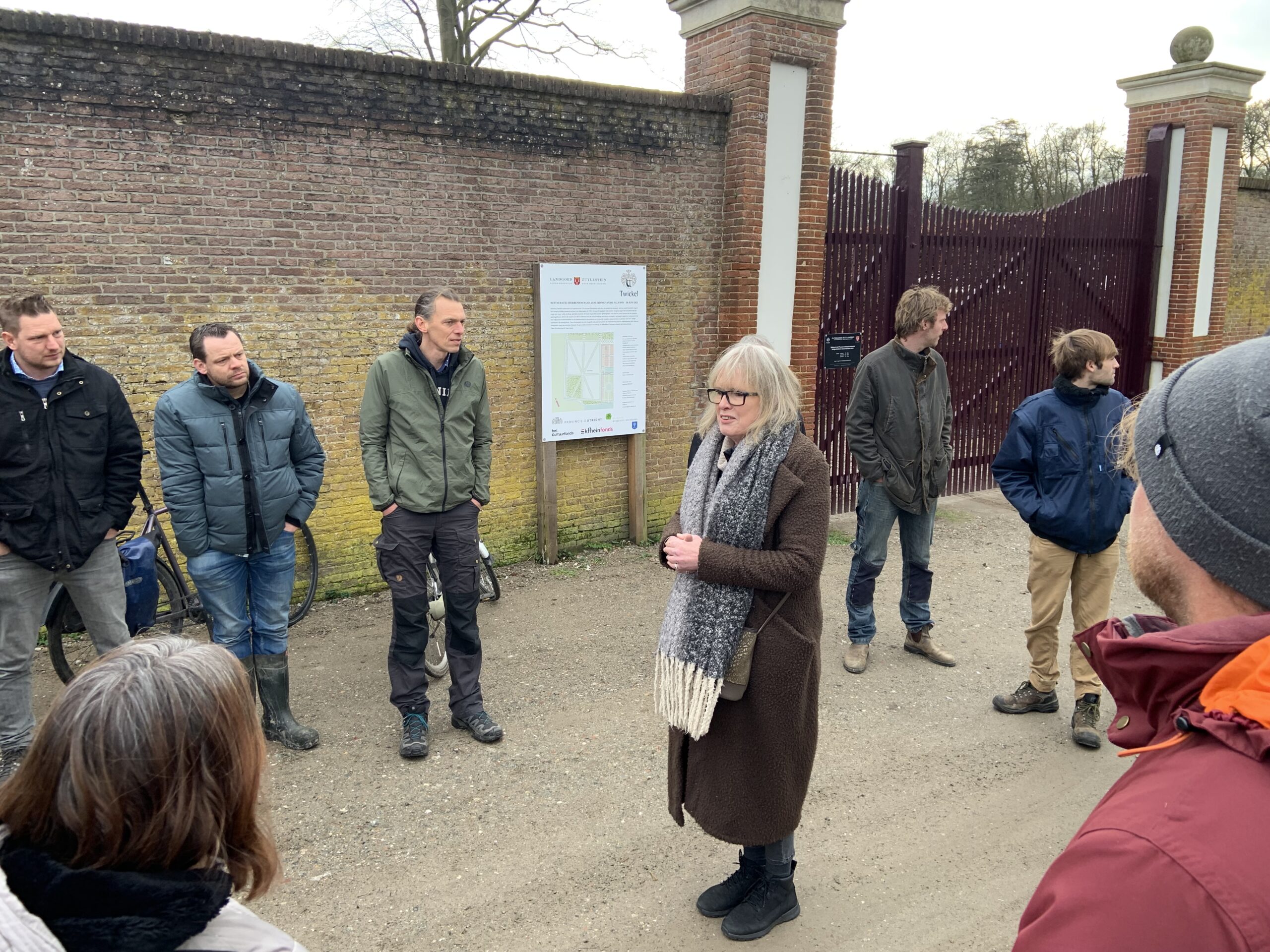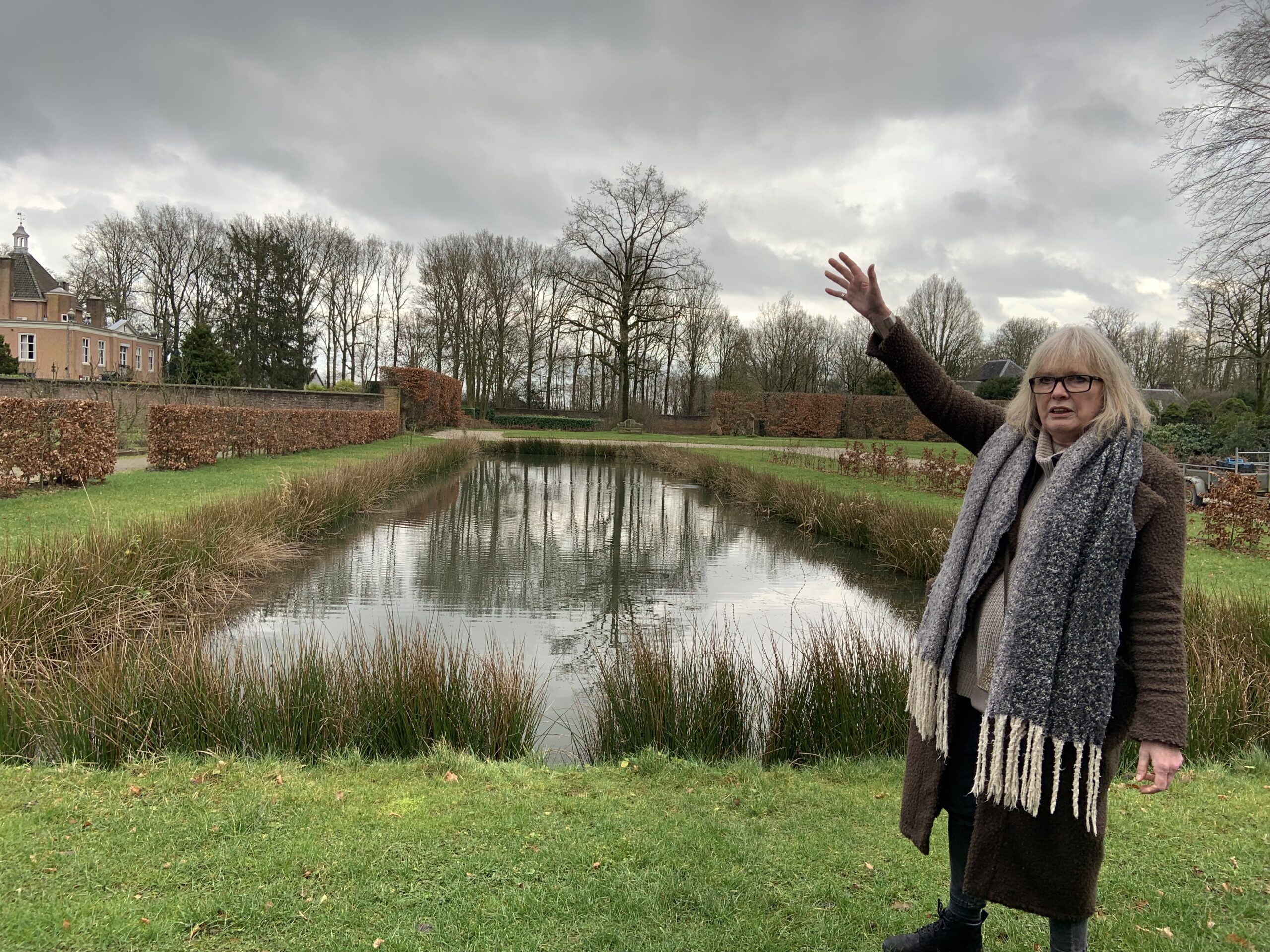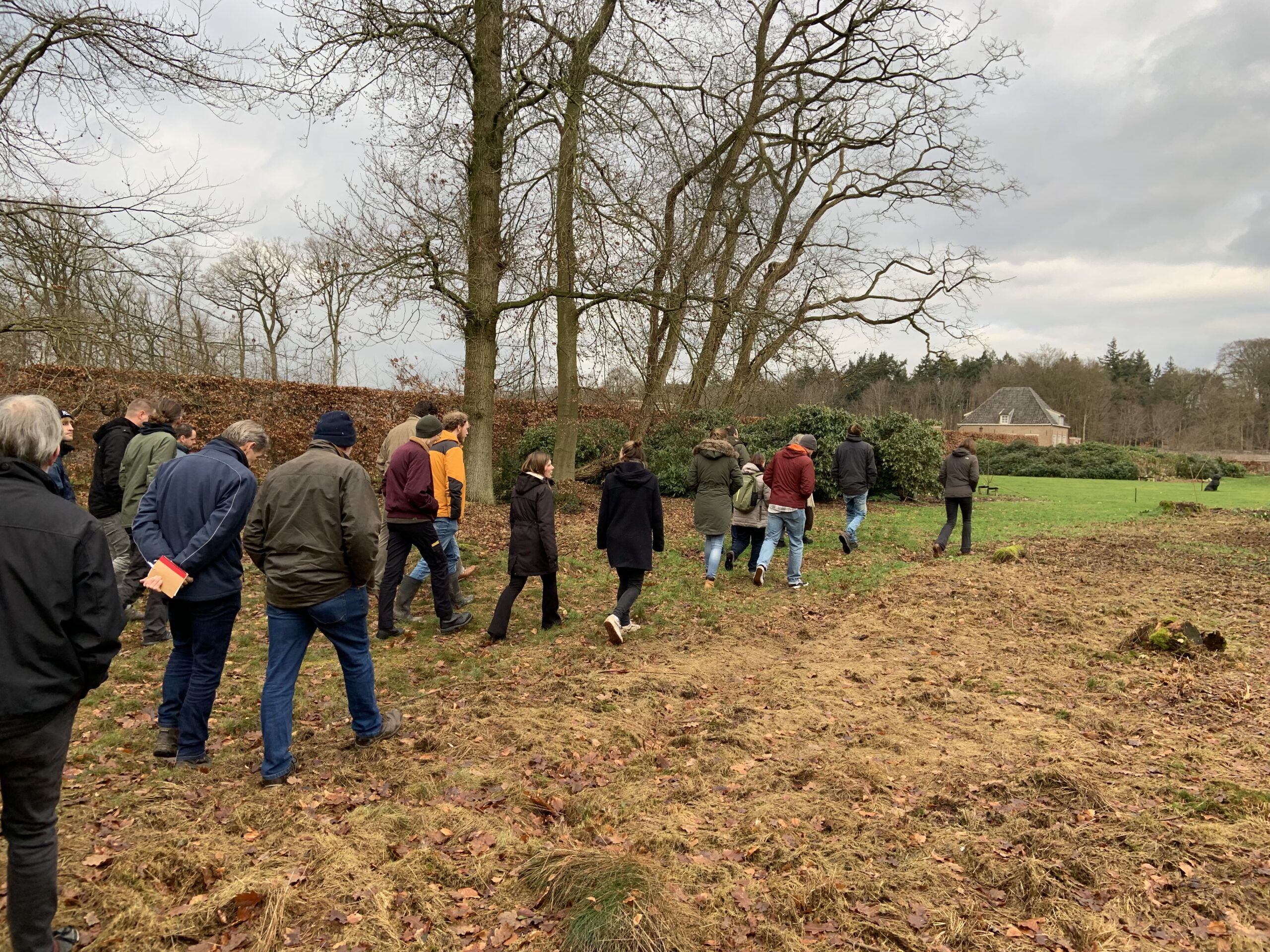On 29 January, our farmers were hosted at Landgoed Zuylestein for the annual farmers' meeting at which we shared the results of the past growing season. Due to the large crowd, we could no longer fit in the Orangery, so we started the meeting in Amerongen.
Owner of the estate, Jemima de Brauwere, welcomed us and told us about the history of the estate, which came into being when sadhouder Frederick Henry of Orange Nassau bought the Zuylestein country estate in 1630. He used the house as a hunting lodge and laid out the gardens around it in Renaissance style. ‘In the 17th century, the estate was a centre of innovation where people experimented with new cultivation techniques. I think it's important to bring that aspect back to Zuylestein.’ So there is currently a vegetable garden again, which is open to the public three days a week, and Jemima is experimenting with old cereal varieties. Since taking over the estate in 2016, she has been working to restore agriculture to the estate. She tries to restore the old structures of the gardens, orchards and landscape to their former glory. She does this, for example, using an old drawing from 1710 on which the garden is drawn from above, completely to scale. ‘It's great to see that the drawing matches reality to within 30 cm,’ Jemima says.
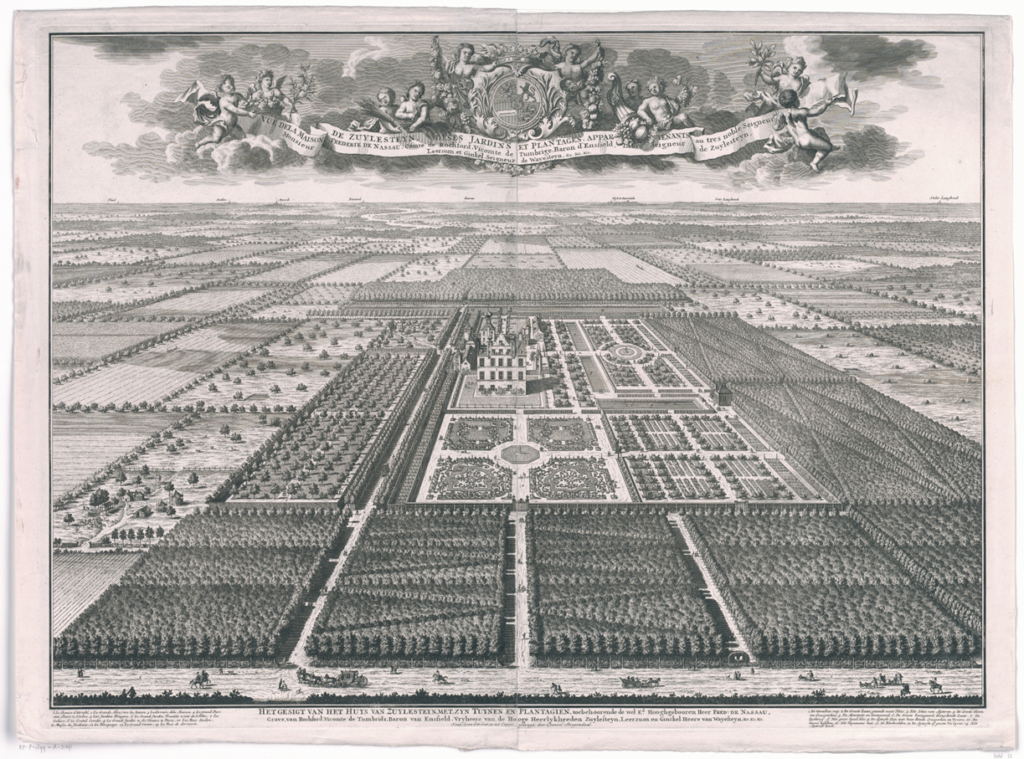
To ensure a sustainable future, the estate is now part of Twickel, with which there is also a (distant) family connection. Administrator Wilke Schoemaker has been brought in as manager to take care of the agricultural branch of the estate. This includes holding discussions with the province about, for instance, the cultivation of grain in the nature fields. This is not always easy, he explains. ‘In principle, you are not allowed to grow food on a nature field, but fortunately we are now given space to grow old grain varieties such as emmer and eenkorn.’
Results 2023 and 2024
After the introduction, it was the turn of field technicians Anna and Bart to present the findings of the past year. After lots of hours in the lab studying all the samples and identifying beetles. So far, 2 kg(!) of beetles have already been determined. ‘With several kilos still to go,’ said Bart. Fortunately, this year finally saw results on ground beetles. ‘Ground beetles are bio-indicators,’ Bart explained, 'Their presence provides information about the ecological characteristics of the environment. In this way, they are good indicators of biodiversity.’
Ground dwelling beetles
In the 2023 results, we saw that more ground dwelling beetle species were present in strip cropping plots than in full-field plots. However, the overlap in numbers of species was quite large. Whether the effect is significant remains to be investigated. For strip cropping, the top three beetles found were: 1) red-legged woodcreeper, 2) copper keelcreeper, 3) common blackshank. Curiously, the top three for full-field cultivation was exactly the other way around, with common blackshank at number 1. ‘So far, it is difficult to see a trend in differences between the two cultivation systems,’ Bart told us.
The rarest finds were made on our host's estate, Zuylestein, where Yellow-spotted Creeper (Harpalus luteicornis), Heathcreeper (Poecilus lepidus) and Bald-headed Creeper (Harpalus signaticornis) were found.
Functional biodiversity
Besides bioindicators, field technicians also measured functional biodiversity, including plasticine (clay) caterpillars. The predation of these by birds and insects - and in some cases even mammals - provides a measure of natural pest control, see image below.

‘To give a measure of predation, we displayed the probability that a clay caterpillar was predated in a graph, for both strip cropping and full-field cropping,’ Anna explains. ‘There you can see that the probability of predation is higher in strip cropping. This effect persists even if you leave predation by snails out of the analysis, which were of course abundant last year.’
Predation was also measured this year by putting out cards with sterilised moth eggs in the field. In collaboration with Gabriele Bolletta, field technicians placed the eggs in the field for a week, then counted how many had been eaten and how many parasitised by, for example, parasitic wasps. 'The predation was slightly higher in strip crops, but even here the overlap was high,’ he says.
Birds
For birds, there was a clear trend as last year: more species of birds interact with strip cropping than with full-field plots. This year, for the first time, winter feeding fields for birds and specific bird fields were also included in the count. As expected, winter food plots performed slightly better than strip cropping, but strip cropping actually seemed to outperform bird fields. ‘This is a valuable signal to farmers that even a field that can be used for production can contribute to habitat for birds,’ Bart said.
Akkerflora

Regarding field flora, also known as weeds, a total of 149 species were counted across all fields, including 17 red list species (endangered species). The number of species was higher on organic farms than conventional farms in both 2023 and 2024, but the total number of field weeds was lower in 2024 than in 2023.
For both organic and conventional farms, the species richness of field herbs was greater in strip cropping than in monoculture. The most frequently counted species were Bird's wallow (Stellaria media), Street grass (Poa annua) and goosefoot (Chenopodium album).
CropMix+
While the field technicians investigate the differences in biodiversity between strip cropping and full-field cropping in general, some of our PhD candidates wanted to delve a little deeper. Their research focuses specifically on the effects of strip cropping on crop yield, biodiversity and pest suppression in cereals and potatoes. Because the existing CropMix network did not include enough growers who have potatoes or cereals with a reference managed in the same way (organic or conventional), they expanded their network beyond that of CropMix. Hence the name CropMix+.
PhD candidates Rik Waenink, Hilde Faber and Esther Moinat presented the first results. The results on insects, studied by catching insects with scoop nets and pot traps, among others, showed that more insects were also found in strip cropping than in full-field cropping. Hilde's research, on crop yield, showed a less clear pattern. Overall, potato yields seemed slightly lower in strip cropping, but this is an average, testing both organic and conventional farms. One grower noted that a plot with strip cropping naturally includes other crops, so the yield per hectare does not depend only on one crop. To draw firmer conclusions, researchers need to analyse the data further.
Strip cropping and phytoftora
Finally, it was the turn of PhD candidate Zohralyn Homulle to explain her research on phytoftora in potatoes. Her research, part of the Synergia programme, shows that the spread of phytoftora can be inhibited by strip cropping. This is because, for example, crops next to potato have a natural barrier effect or lower the humidity.
Tour of Zuylestein Estate
We ended the day with a tour of the estate. Among other things, Jemima showed us the historic kitchen garden, as well as the strip cropping fields and the newly planted star forest. This forest had been completely destroyed during a fall wind in 2021. The pigs, which roamed there before, now stay elsewhere to avoid damaging the young plantings. This keeps the estate constantly moving and innovating. We look forward to visiting the estate sometime in spring or summer. Thanks again to Jemima for her hospitality!
